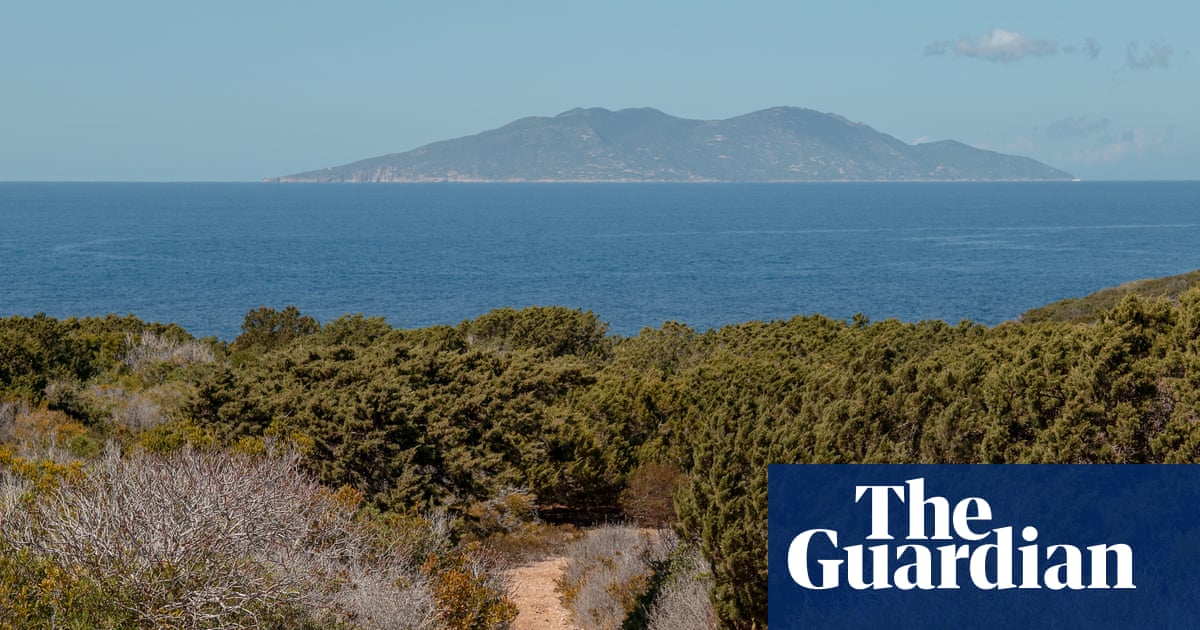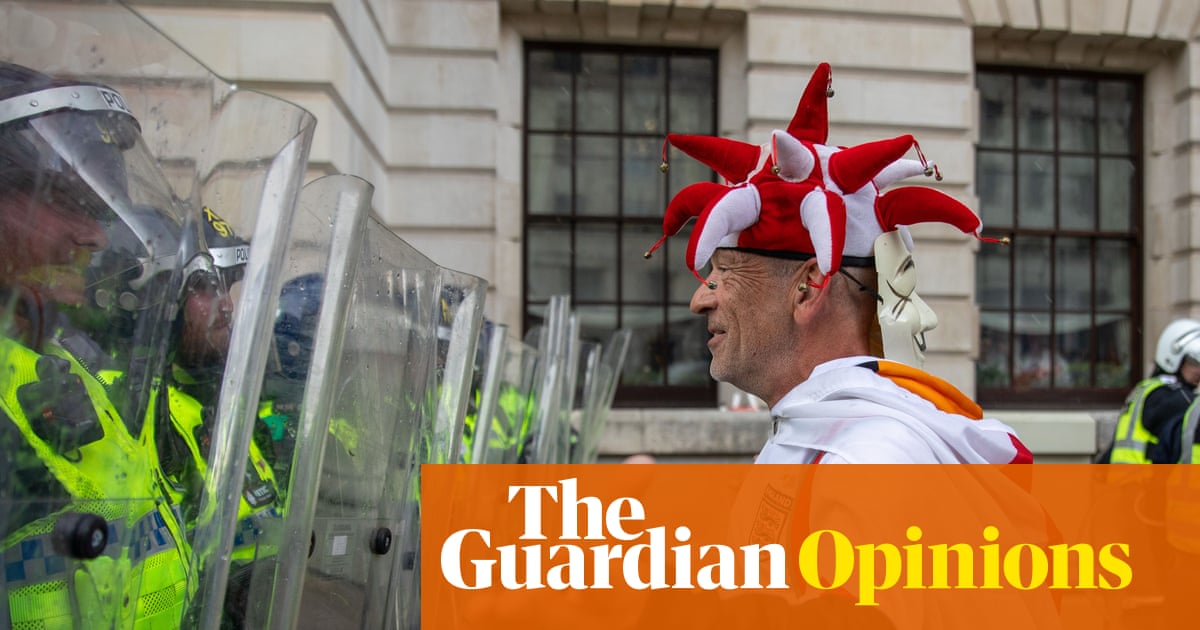US state department employees recently opened up their emails to find a PDF to their new “style guide”, which dictates what language and terminology they can and can’t use.
According to this new updated guide, the term “racially or ethnically motivated violent extremism”– “REMVE” or “RMVE” – was now banned, except in situations where they were legally compelled to use it.
While style guide updates in government agencies that tinker with acronyms between administrations are not unusual, the document did not yet propose an alternative term for the threat from the violent far right.
Current and former state department officials told the Guardian that this was just one reason why they are concerned about how seriously the Trump administration will take the ongoing threat from white supremacists at home and abroad.
Over the last six years, the state department caught up to European partners by recognizing the transnational threat posed by the radical far right – after decades of laser focus on jihadist terrorism.
In January, one week before Donald Trump returned to the White House, the state department took action against the white supremacist collective Terrorgram, designating it as a foreign terrorist organization and linking it to a shooting at an LGBTQ+ bar in Slovakia, a knife attack at a mosque in Turkey and a planned attack on energy facilities in New Jersey.
It was the third “racially or ethnically motivated violent extremist” group to ever face terrorist designation or sanctions from the state department. First was the Russian Imperial Movement in 2020, and later the neo-Nazi Nordic Resistance in 2024.
In addition to the new ban on using language to refer to the threat of white supremacists, last month Marco Rubio, the secretary of state, unveiled a plan for huge cuts at the state department, which would result in the elimination of more than a hundred offices and about 700 jobs – including those whose portfolios include racially motivated violent extremism.
Among the offices on the chopping block is the Office for Countering Violent Extremism, or “CVE”, which works on identifying root causes of radicalization and extremism to prevent terrorist attacks before they happen.
CVE began looking at international white supremacist terrorism around 2019. Now, that threat accounts for about a third of their work. Rubio said in his announcement of the plan that the current state department was “beholden to a radical political ideology”.
The coming changes at the state department follow a pattern of moving resources away from programs that work on the threat of the far right since Trump took office. In March, the FBI scaled back an office that was focused on domestic extremism. The FBI’s joint terrorism taskforces, which investigated domestic and international terrorist threats, were redirected to assist in the president’s immigration enforcement operations.
Meanwhile, offices at the Department of Homeland Security, similar to the state department’s CVE, which worked on threat prevention, including from the far right, have also seen cuts and funding for grants has been terminated.
“If you’re dismantling the offices that deal with those threats, you’re dismantling the administration’s ability to deal with the far right,” said William Braniff who left his role as director of the DHS’s Center for Prevention, Partnerships and Programs (CP3) earlier this year and now heads American University’s Polarization and Extremism Research and Innovation Lab (Peril) in the school of public affairs.
Officials and experts interviewed by the Guardian suspected that the cuts to those programs, particularly to violence prevention programs, probably stemmed from a desire to just “move fast and break things” in the spirit of the “department of government efficiency” (Doge), rather than a pointed agenda to upend the government’s ability to track and battle the far right.
Some also fear that they are looking to prioritize threats that play well with Trump’s base; at the same time, they are deprioritizing the threat from the far right, which Trump and his allies have cast as a politicized smokescreen for the Biden administration to go after white Christian Americans. (The term “REMVE” was already seen as a concession, to avoid accusations of politicization; officials note that America’s partner countries are free to use the term “far right).
“Previous administrations weren’t trying to censor the radical right, they were dealing with real actors on the right wing,” said Jason Blazakis, former director of the counter-terrorism finance and designations office at the Bureau of Counterterrorism, who now teaches terrorism studies at the Middlebury Institute of International Studies.
“People say that this administration doesn’t want to talk about this [the threat from the far right] any more, and I think there’s an element of truth to that.”
Blazakis says the new focus of counter-terrorism is “threats that are seen as political winners in the Maga movement,” such as cartels and Islamist jihadism.
after newsletter promotion
At the state department, rumors had been swirling for weeks that Sebastian Gorka, who is serving as senior director for counter-terrorism on the national security council, was looking to ban the term “REMVE”. (When the Guardian contacted the state department to request comment on the style guide change, our inquiry was directed to Gorka).
In his current role, Gorka has plenty of influence on state department initiatives. During his first brief tenure with the Trump administration, reporting highlighted his ties to far-right groups in his native Hungary. He also made comments downplaying the threat of white supremacy just days before neo-Nazis violently rallied in Charlottesville, Virginia, in 2017. At Politico’s recent Security Summit, Gorka outlined his vision for counter-terrorism policy.
“What we are doing right now is preparing the new US counter-terrorism strategy, refocusing on the real cause of jihadism, which is the ideology of jihad,” he said.
Formal recognition of the threat from modern white supremacist terrorism by the US government came during Trump’s first administration. A number of deadly attacks around the world, from Christchurch, New Zealand, to El Paso, Texas, to Halle, Germany, highlighted the growing danger of an increasingly globally interconnected far right who were united by a shared belief in “great replacement” conspiracy theories, which stoke fears of immigrants of color outnumbering populations in white-majority countries.
Speaking before Congress in 2020 Chris Wray, then the FBI chief, for the first time identified white supremacist violence as the top domestic terror threat. The US intelligence community put out a report last year identifying white supremacist or neo-Nazi extremists as among the top global terror threats.
Getting the state department to care about the threat from the global far right was initially an uphill battle, sources told the Guardian.
Even as coming cuts suggest resources will be taken away from that threat, it hasn’t gone away.
This week, German police arrested teen members of a far-right terrorist cell on suspicion of targeting migrants and political opponents in attacks with the broader goal of destabilizing democracy. Police say that the cell was part of an organization called Last Defence Wave, which organized across 70 chat groups around Germany. Authorities in Brazil recently said that they foiled a planned bomb attack on Lady Gaga’s concert by a far-right anti-LGBTQ+ hate group.
And some officials at the state department fear that far-right terrorist groups are becoming emboldened in light of the Trump administration, pivoting attention away from them. For example, the US neo-Nazi group The Base, whose leader is based in Russia, appears to be looking to ramp up violence overseas, recently calling for targeted attacks in Ukraine.
One official characterized the cuts to violence prevention programs at the state department, including those that work on the threat from the far right, as “excessive and careless reduction in government” that “will make us less safe”.

 3 months ago
102
3 months ago
102

















































